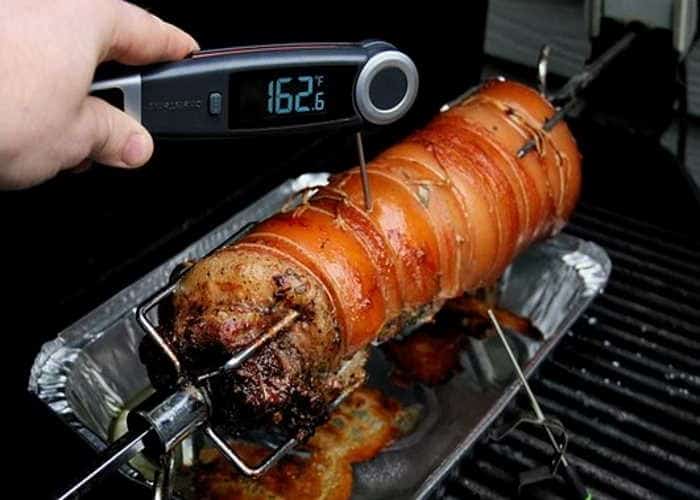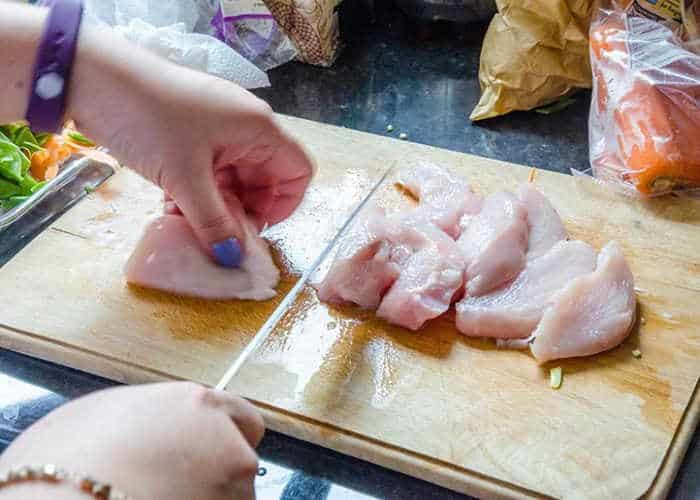
What is Temperature Danger Zone and How to Avoid?
Temperature is one of the most critical aspects of cooking. The correct temperature is vital in making sure that food not only tastes good, but that it is safe to eat in the first place. However, temperature can also be dangerous, especially when you are in the food danger zone. It is critical that you understand what this danger zone means and how you can avoid foodborne illnesses.
What is the Food Danger Zone?
 The food danger zone is simply the temperature range that promotes the growth of bacteria, making food most prone to cause food poisoning and other foodborne illnesses. This is why it is important to understand what the food danger zone is, so you can prevent exposing your food to this temperature level.
The food danger zone is simply the temperature range that promotes the growth of bacteria, making food most prone to cause food poisoning and other foodborne illnesses. This is why it is important to understand what the food danger zone is, so you can prevent exposing your food to this temperature level.
There is no one-size-fits-all rule when it comes to bacteria growth and exposure. There are numerous factors that can influence the growth of bacteria and how it can affect humans that might consume the food that is contaminated with it. These other factors include acidity, salt content, and moisture. However, temperature is one of those factors that are within your control, so you need to know the proper way to cook and handle food to ensure that it isn’t dangerous to consume.
Food can become dangerous after several hours if it is left within the 12-30 degrees C range. Meanwhile, food at 30-45 degrees C can be very dangerous within a couple of hours as this can promote bacterial growth. The same also goes for food that is kept at 45-51 degrees C.
Simply put, you need to be extra careful when food is in the 20 to 50 degrees C range. This is the temperature zone wherein bacteria growth is at its most rapid. You should limit the amount of time that the food is kept in this danger zone. Also, this is a great reminder to strive for the minimum internal temperature that is required for cooking certain types of food, especially meat.
Why is the food danger zone important? It’s simple – it’s for your own safety when consuming these foods. Bacteria can thrive in these conditions and it can be the culprit behind foodborne illnesses. You will notice that the smell and appearance of the food might change when it reaches this temperature level.
The danger zone for hot and cold food can vary, too. For hot foods, you need to strive for a temperature that is 60 degrees C or warmer. For cold food, you need to keep the temperature of the food below 4 degrees C.
Leaving food for any length of time within these temperature ranges is something that must be avoided in order to decrease the chances of promoting foodborne illness. This refers to allowing the food to stay in the food danger zone for an extended period of time. It is equivalent to cross-contamination as one of the leading causes of food poisoning.
Guidelines on Safe Cooking Temperature
The cooking process is one of the aspects that you can control in order to achieve a safe temperature level for handling and food preparation. The best way to ensure that the food is safe to eat is to monitor the internal temperature of the food using a thermometer. This is an important guideline to consider when cooking meat and poultry that can be high risk for salmonella, listeria, and other types of food bacteria.
Use this guideline for the safe cooking temperature of common types of food:
- 75 degrees C – Poultry (chicken and turkey), seafood, stuffed meat, and poultry stuffing with meat.
- 68 degrees C – Ground meat, ground seafood, injected meat, and ratites (ostrich).
- 62 degrees C – Pork, lamb, veal, beef, steaks, and game meat
- 57 degrees C – fruits, vegetables, grains, and legumes
Anything below the range above is considered the food danger zone. Make sure to avoid this zone as much as you can or try to limit the amount of time that the food is kept in this range.
When monitoring the temperature of food, it pays to use the right thermometer for the job. There are different types of thermometers on the market and you need to consider the best type of thermometer for the job. Make sure to calibrate your thermometer too, so that you can get an accurate reading.
Food Safety Tips to Consider
 Safety is an essential consideration when keeping a close eye on the temperature of the food. Aside from the cooking process, the handling and storage of the food is also something to consider to ensure safety.
Safety is an essential consideration when keeping a close eye on the temperature of the food. Aside from the cooking process, the handling and storage of the food is also something to consider to ensure safety.
Once you have reached the recommended internal temperature for the food, it is important to maintain that temperature for as long as possible before serving. The use of proper food containers to keep hot food warm or cold food chilled is important. For example, you need to use a warming vessel for hot food or cold food storage for cold food. It is also important to keep food covered at all times so it can maintain its temperature for as long as possible.
It is also recommended that you closely monitor the temperature of the food. This will enable you to take the correct action when it comes to dealing with the food, whether you can reheat it or throw it away.
Do keep it in mind that food that has been left out for too long at room temperature is prone to bacterial growth. When it is kept at room temperature for too long, it can promote bacteria that cause foodborne illness. Therefore, you should avoid this practice as much as possible. If you cannot serve food that you cooked immediately, you need to find a way to maintain the safe temperature for as long as possible.
The best way to ensure food is safe to consume is to use a thermometer. There are plenty of them on the market to choose from that will enable you to accurately read the temperature of your food. For your own safety, dispose of any food that has been out for too long or when it is showing any signs of contamination.
10 Comments
Comments are closed.
Discover Other ChefsTemp Products
Discover more recipes and learn kitchen tricks by joining our cooking family on Facebook.
You may also like:
















[…] food? Any food with meat should always be reheated before consumption to ensure it is out of the temperature danger zone. Ensure that the internal temperature of the food is 165°F (73°C) when reheating in the […]
[…] when the temperature goes above 165°F (74°C). Dark meat is forgiving, and it can be cooked to a temperature danger zone as high as 180°F (82°C) without losing quality. And, in my view, it is better cooked at a higher […]
[…] you must be aware of the risks associated with the temperature danger zone so that you can cook and prepare food accordingly. When you consume food that has pathogens in it, […]
[…] there is a drawback to cold smoking your fresh salmon because it stays within the temperature danger zone (4-60°C or 40-140°F) for several hours. We recommend you don’t use this method, especially if […]
[…] To make it easy for you: check the thermometer a couple of minutes after adding the lit charcoal. If it shows more than 225F, it’s your cue to close the intake damper halfway. This will reduce the oxygen and contain the grill heat. Check the temperature every 5 minutes. You have to be sure that you’re not in the food temperature zone. […]
[…] is also a practical measure for food business owners because proper temperature monitoring can significantly reduce product loss. When food is no longer safe to consume, the best course of […]
[…] meat ranging from pork to fish to beef to mutton. A thermometer can help you avoid getting into the temperature danger zone ensuring that you grill all […]
[…] below 145 degrees Fahrenheit (63 degrees Celsius) might be unsafe, so make sure that you avoid the danger zone. If you are new at this, make sure you refer to the steak temperature chart and use a meat […]
[…] meats. Why? Because different kinds of meat are required to be cooked at different temperatures – what is a temperature danger zone and how to avoid it, read here. Such as if you are grilling chicken it will take less time and can be cooked at a relatively low […]
[…] at home, then don’t leave it in the oven. You can always check the meat when you have reached the recommended cooking time. You can take the meat out of the oven and then place the thermometer in the middle of the meat to […]